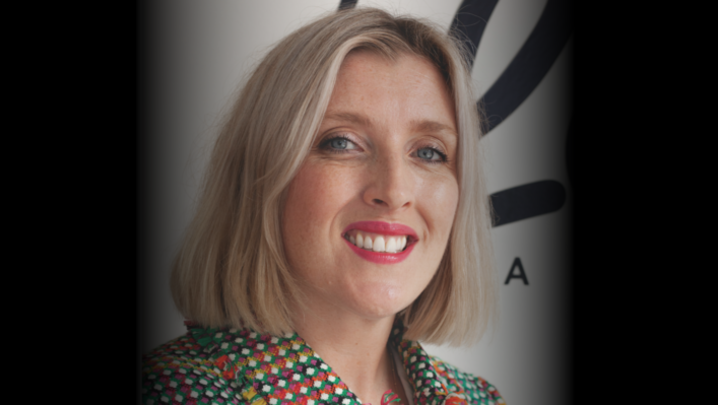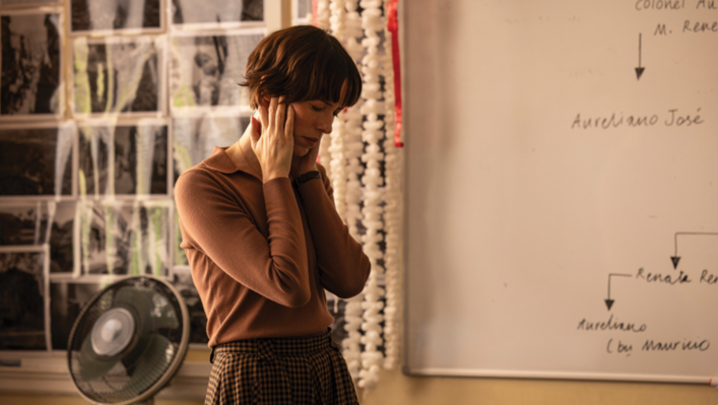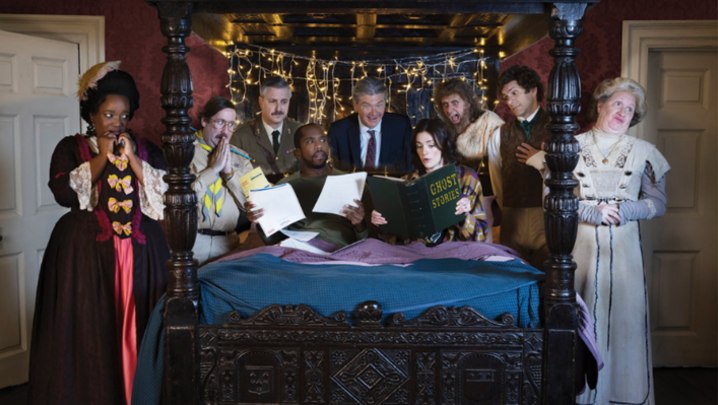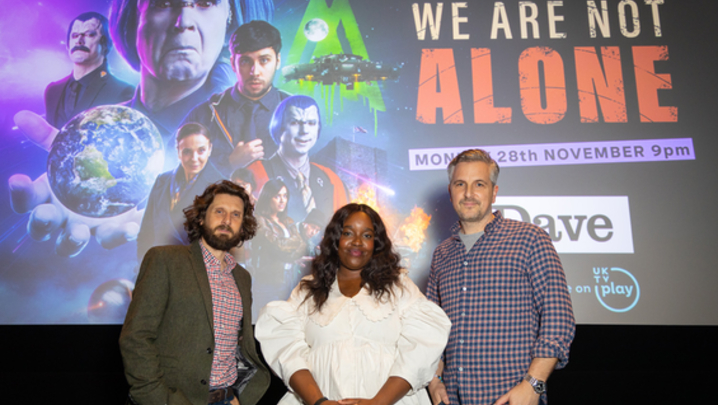Shilpa Ganatra gets the inside track on how Holly Jackson’s A Good Girl’s Guide to Murder was adapted for BBC Three
On paper, A Good Girl’s Guide to Murder has all the hallmarks of a top-tier series. Originally published in 2019, Holly Jackson’s young adult novel is a cultural phenomenon, going viral on TikTok, winning the British Book Awards’ Children’s Fiction Book of the Year in 2020, and the hearts of its two million readers.
As well as being known intellectual property, it feeds into the thirst for TV crime drama, and for young adult shows in the vein of Heartstopper and Sex Education.
It tells the story of 17-year-old Pip Fitz-Amobi – in the series, played by Emma Myers, famed for starring alongside Jenna Ortega in Netflix’s Wednesday – who lives in the idyllic English countryside. Except, five years ago, fellow schoolgirl Andie Bell (India Lillie Davies) was murdered, and everyone believes it was local boy Sal (Rahul Pattni) who did it.
Pip is unconvinced and launches her own investigation, helped by Sal’s brother Ravi (Zain Iqbal), but much to the chagrin of the community. “You’re totally happy to fuck everyone’s lives up just so you can carry on playing detective?” asks her best friend Cara (Asha Banks). “I’m not playing,” replies the steely eyed Pip.
It helps that the six-part series has attracted a stellar cast, including Motherland’s Anna Maxwell Martin as Pip’s mum and Ghosts’ Mathew Baynton as Cara’s dad.
When the manuscript of the soon-to-be-published book landed on the desk of executive producer Florence Walker at Moonage Pictures more than five years ago, it was the story that piqued her interest.
Says Moonage’s founder Frith Tiplady: “We’re very proud of Florence for spotting it. The book’s success was a real plus point, but she was really drawn to the book because there is a great young protagonist, there’s a strong plot and, in keeping with young adult [fiction], it’s based around relationships. Audiences love crime drama. We thought, why shouldn’t we deliver that kind of a story to a younger audience?”
The incredible success of the book since Moonage’s acquisition – it has been translated into 33 languages and Jackson has become Britain’s top female crime writer – means that there is an audience-in-waiting, albeit one with high expectations.
The job of scriptwriting went to Poppy Cogan (The Fold, Red Rose, Chloe), currently developing Come Again, the debut novel from Peep Show’s Robert Webb, and Three, by Israeli crime writer Dror Mishani.
“I get quite a lot of books sent to me. Often, it’s hard to know which ones to go for because most of them have some strengths, but this was a complete no-brainer,” says Cogan. “It had a central character who was really fresh.
“Sometimes, in the teen world, the characters can be taken to dark places and ruined a bit, like in Euphoria (Sam Levinson’s HBO show). Pip is taken to dark places, too, but her character is allowed to remain wholesome. It’s not about her becoming a bad girl and doing a Grease makeover.
“Plus, there was a humour that appealed to me because I’m quite silly. To me, it felt like a really fun teen show that I could see quite clearly.”
To make the book a good fit for TV, Cogan and the writers room “closed the book for a while and reworked the plot so it fitted into the right shape”, she says. In other words, six 45-minute episodes (a commercial hour for international broadcasters).
Core aspects, including the main plot twists and turns, remained. As did the culturally diverse characters. They make the story feel contemporary, even if it’s also a little timeless and placeless.
Cogan explains: “The diversity is like it was in the book, and that was something we thought quite a lot about. Sal, being a South Asian boy in a white world, is a part of the story – it partly explains what happens to him.”
Whenever the writing team made changes, they consulted with Jackson, who is an executive producer on the series. Tiplady says: “She’s got a very direct relationship with the core fan base, so it was a constant part of the process that, if we had to move away and reinvent aspects, we’d check if we went too far, and made sure we still honoured the characters.”
One change was reimagining Pip’s investigation to make it feel realistic on screen. “The book has quite a graphic feel to it – there are Post-it Notes and interview transcripts scattered around,” says Cogan. “On screen, you have to think carefully how this 17-year-old is going around asking people pressing questions about their potential involvement in a murder. So, we needed to give her more challenges.”
Another shift from the book was replotting to escalate the sense of threat in the storytelling. Cogan says: “The book can move between clues quite a lot – you can leave them hanging and come back to them. In the TV show we needed to propel it forwards, so each reveal led to an action. That was tricky.”
Although a US version of the book is set in Connecticut, the team decided to stick to the original English location, not least because England and cosy crime dramas go hand in hand.
Helped by the historic picture postcard location of Axbridge, Somerset, the series begins as cosy crime. It then neatly unfurls to reveal darker secrets about the town. Cogan says: “We knew we had to cover things like date rape and murder, so it goes dark, but keeps its warm heart.”
Tiplady adds: “A 13-year-old can watch it. It’s not that it’s scary to watch, it’s more what the story uncovers.”
Dolly Wells, best known as writer and actor in Sky Living’s Doll & Em alongside Emily Mortimer, took the director’s chair. A Good Girl’s Guide to Murder marks her TV directorial debut, but her acting background gave her a strong foundation.
“Being an actor for 25 years means you understand how directors should speak to actors to get them where they need to be,” she says. “Also, from being on the other side, I know that you want assurance that your director has a handle on things. For me, it was an exercise in being as calm as possible, so that no one else panics.”
The result is a series primed for international success. Early on, German public service broadcaster ZDF came onboard as a co-producer, and later, Netflix joined as the US co-producer.
BBC Three partnered as the UK broadcaster because A Good Girl’s Guide to Murder appealed to a young but potentially broader audience, as with previous BBC Three breakout shows such as Normal People and Fleabag.
These deals “helped [international distributors] BBC Studios breathe, but it doesn’t mean a bigger budget – it just pays off an advance,” says Tiplady. “It also means other territories are going to buy it, and also increases the likelihood of a returning series.”
Indeed, with three more stories already written as part of the book series, there should be an expanding audience ready to see where Pip’s sleuthing adventures will take her next.
All episodes of A Good Girl’s Guide to Murder are on BBC iPlayer from 1 July.






